|
Home
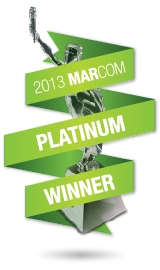
Marcom Award
2007-2008-2009
2010-2011-2012
2013-2014

Videographer Award
2007-2008-2009
2010-2013-2015
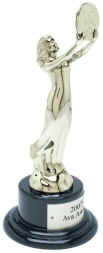
AVA Award Winner
2007-2008-2009
2010-2011-2012
2013-2014-2015
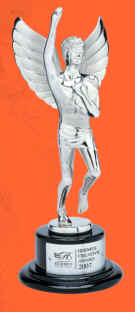
2008-2009-2010
2011-2012-2013
2014
Hermes Creative
Award Winner

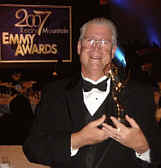
Ed
Sharpe / CouryGraph Productions
Glendale Daily Planet / KKAT-IPTV 2007 EMMY®Award Winner
2007
Rocky Mountain Region Emmy® Award Winner for Breaking News/ Continuing
Coverage
FIRST
IN GLENDALE!

Berkeley Film Festival
Grand Festival
Pioneer In
Television Award
2011
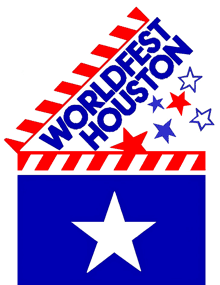
Remi Award Winner
Worldfest Houston
2009 - 2010 -2011

2009 EMPixx Awards
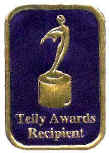
Telly Awards 2006-2007-2008-2009-2010
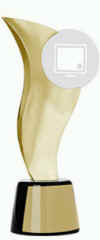
2008 & 2009
Communicator Awards
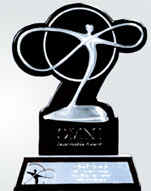
Omni Intermedia Awards
2007-2008-2009

Millennum Awards
2006-2007-2008
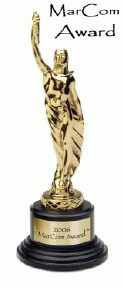
Marcom Award
2007-2008-2009
2010-2011-2012
2013-2014
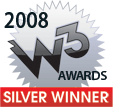 
W3 Media Awards
2008/2009
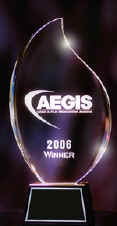
2007/2008/2009 Aegis
Finalists and Winners

Accolade Award Winner
2007-2008-20010
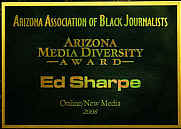
Arizona Assn. of Black Journalists Diversity Winner
2008/2009
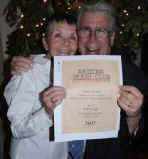
Arizona Press Club Winner
Ed Sharpe,
The Glendale Daily Planet:
Use of Online Media
"Cesar E. Chavez 2007"
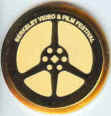
Berekeley Film Festival
2006-2007-2008-
2009-2010-2012
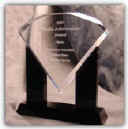
Media Achievement Awards
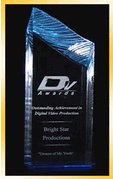
2008/09 Finalists and Winners - DV Awards

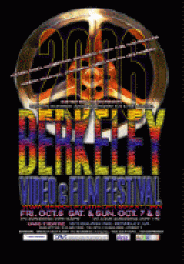
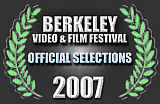
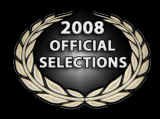
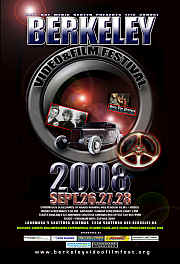

CouryGraph
Productions



CALIFORNIA
HISTORICAL RADIO SOCIETY
IS PLEASED TO HONOR
EDWARD
A. SHARPE
WITH THE
CHARLES D. 'DOC' HERROLD
AWARD FOR
OUTSTANDING ACHIEVEMENT IN
THE PRESERVATION AND DOCUMENTATION OF
EARLY RADIO.
BY
THE BOARD OF DIRECTORS, 1992:

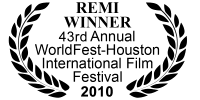
| |
|
Sun
Mercantile Building
Here Are Some Stills..
and... now for the ...
access the
unedited footage!
This is 1 hour 40 minutes long.... it is encoded at 150 KBPS so it comes
down pretty fast on a broadband line or RIGHT CLICK YOUR MOUSE
AND "SAVE AS" to you desktop and watch it.
Call me at 623 435
1522 If you need permission to post or broadcast any of this. Higher
RES Encoding of this footage is available.
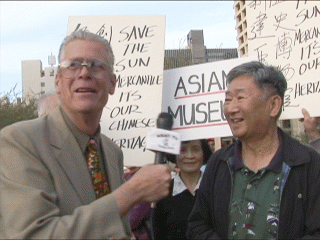
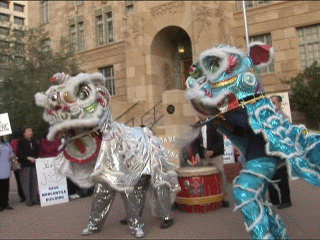
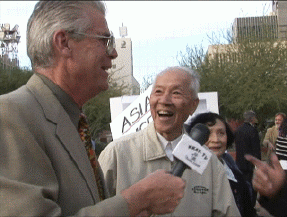
Rally, Interviews and
Council Meeting Footage...
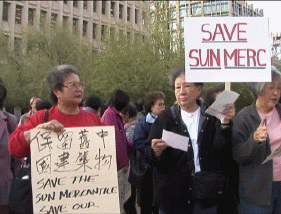
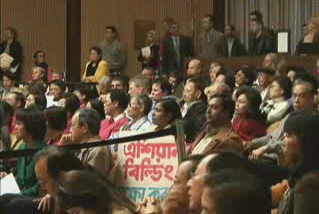
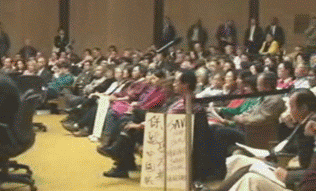
a full house!
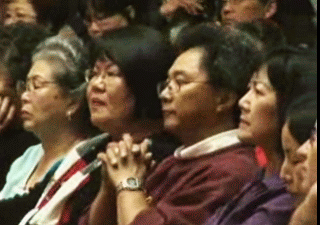 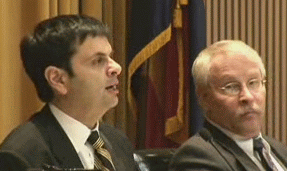
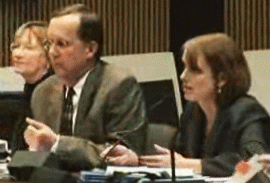 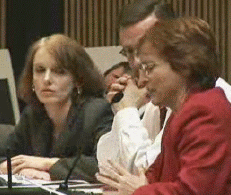
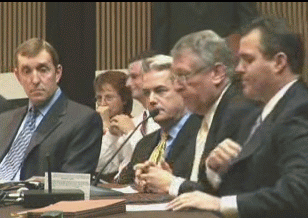
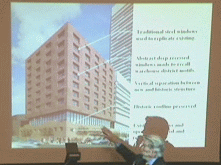
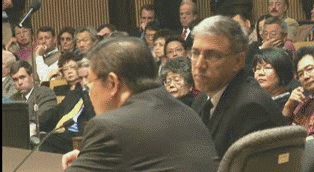 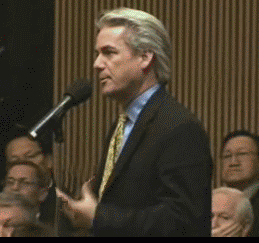
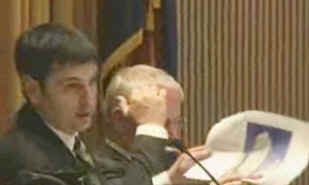 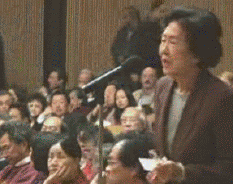
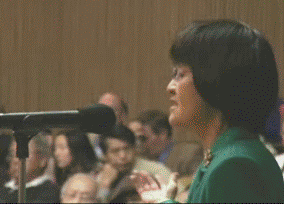
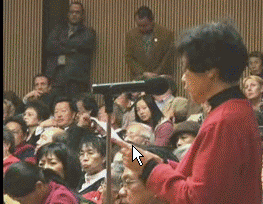
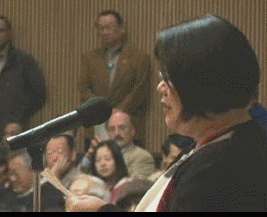 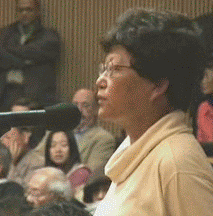
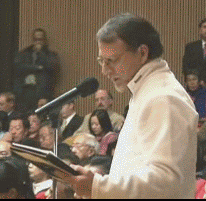
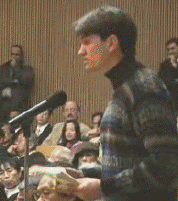
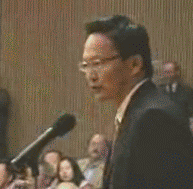 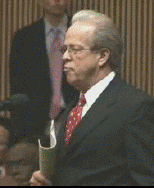
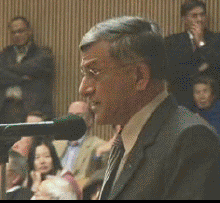 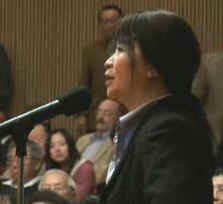
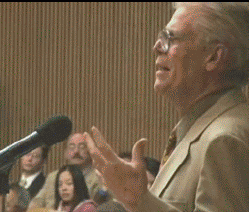
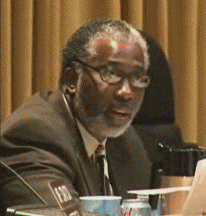
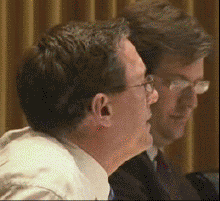 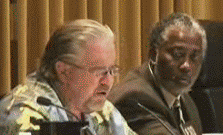
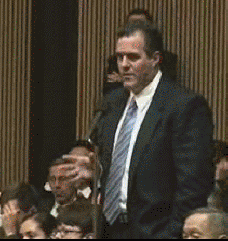
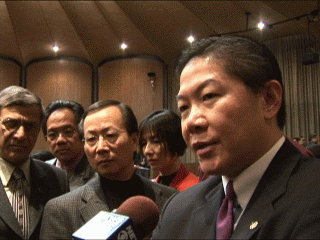
Phoenix Council Meeting December 14 , 2005

Questions?
Call me at 623 435
1522
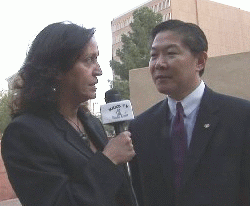
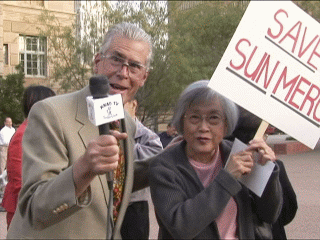
(Phoenix/Glendale
Arizona
Ed Sharpe KKAT-TV Independent Internet Television)
Phoenix
city government's current decision making process is not very innovative
when it comes to saving the Sun Mercantile Building -- the LAST remaining
structure in Old Chinatown --
It seems they
will allow a developer to build 11 stories of condos on top of it!
This will set a dangerous precedence throughout this city and mark
the beginning of the end of many unique buildings in Phoenix's warehouse
district. If something doesn't change… we can expect either the
demise of the buildings or a kludge of over and on top of many
buildings….
Now
add one more convolution to this story…. The Asian American Population
in Phoenix would like to have a 4500 sq. foot cultural museum in the Sun
Merc building…
this is 4500 sq feet out of 2 of the 14,000 sq foot floors that are
in the building…
the city wants to allow them 1000 sq. feet…. But… the
developer…does not even want to guarantee the 1000 sq. feet!
Watch
the movie... Hear the voices….
It is a rough edit… but… what could really be edited out and
still tell the story?
Video of Sun Merc public
rally & Phoenix Council meeting available for download
 Thanks
to Ed
Sharpe of Glendale, Arizona,
interested individuals can view 100 minutes of unedited video footage
of the December 14, 2005 public rally and Phoenix City Council meeting
where the main topic of discussion was the fate of Sun Merc. Thanks
to Ed
Sharpe of Glendale, Arizona,
interested individuals can view 100 minutes of unedited video footage
of the December 14, 2005 public rally and Phoenix City Council meeting
where the main topic of discussion was the fate of Sun Merc.
Visit http://www.glendaledailyplanet.com/,
scroll down a tad, and click on "Access the Unedited
Footage!" Information and instructions on downloading the
material are provided. In addition, Ed has uploaded several more
photos from the City Council meeting.
RECENT
NEWS AND LINKS RELATED TO THIS STORY... Provided by Jim McPherson Arizona
Preservation Foundation
Mark your calendar!
A preliminary site plan review and
building code issues discussion will be held at 9:30 a.m., December 28,
2005, First Floor Conference Room, 1W, New City Hall Building (the
one that wraps around -- not on top of -- historic Orpheum Theater
Building pleases few
[Source: Rene Gutel, KJZZ Radio, December
15, 2005] -- Members of Phoenix's Asian-American community are
unhappy with the city council's decision last night to allow construction
of a hotel and condo complex on top of the historic Sun Mercantile
building downtown. The two story brick structure is the last
landmark of the city's old Chinatown. It's right next to the America
West Arena, and owners of the Phoenix Suns want to build an eleven story
above it. The City Council tried to craft a compromise but neither
side is too pleased with the result. [Listen
to the full radio broadcast at http://kjzz.org/news/arizona/archives/200512/sunmerc]
Builder remarks sting Asian
community
[Source: Arizona Republic, Business Buzz,
December 23, 2005] -- Ill feelings are still bubbling from last
week's Phoenix City Council decision to allow a development group led by
Robert Sarver and Jerry Colangelo to add 11 stories to the Sun Mercantile
building near US Airways Arena. READ THE ENTIRE STORY AT at:.
[Source: http://www.azcentral.com/arizonarepublic/business/articles/1223buzz-bizbuzz23.html]
The Bird (reports on
plundering in Phoenix's, um, Chinatown)
[Source: Robert L. Pela, Phoenix New
Times, December 22, 2005] -- Developers want to obliterate another
historic downtown building (in Phoenix-speak, that's any building that's
more than three weeks old) and put up a big, shiny resort hotel.
So what else's new? Well, this time, local preservationists have
been joined by the PHX's Asian-American community in claiming that
compromising the historic Sun Mercantile building, 232 South Third
Street, erected in 1929 by Shing Tang, the immigrant father of late
former Phoenix vice mayor Thomas Tang, is akin to race discrimination.
more at: ( This article is entertaining!) [Source: http://www.phoenixnewtimes.com/Issues/2005-12-22/news/Bird.html]
Weekly report from the City Historic
Preservation Officer
[Source: Barbara Stocklin, Historic
Preservation Officer, City of Phoenix, December 20, 2005]
-- On December 14, the City Council held a public hearing to consider
the applicant’s appeal of the Historic Preservation Commission’s
decision on Certificate of Appropriateness application HP-245-05-8 for
the Sun Mercantile Building, located at 230 S. 3rd Street. The
Council approved the application subject to several stipulations but
allowed the 11-story tower over the historic building.
Stipulations included
preserving the north façade of the Sun Mercantile Building, providing
exterior historic interpretation, dedicating at least 1,000 sq. ft. of
the main floor as museum space, and donating $75,000 toward a nonprofit
organization affiliated with the proposed museum. The Council also
stated that they would not support removing the Sun Mercantile Building
from either the Phoenix Historic Property Register or National Register
of Historic Places and wanted to move quickly to begin the Asian
American Historic Property Survey, which was previously scheduled to
begin next fiscal year.
December 14, 2005 letter from Arizona
Action for the Arts
Dear Mayor Gordon and Phoenix City Council Members:
The Board of Trustees of Arizona
Action for the Arts is dismayed at the violation of the City of
Phoenix’s policy to consult with appropriate departments and go
through the established channels in making a decision on the fate of the
historic Sun Mercantile Building.
The Sun Mercantile has such
significance that it is on the National Register of Historic Places, as
well as the Phoenix Historic Property Register. As such, it also
is protected by the Historic Preservation Overlay (HPO) which requires
that changes in use and development within the HPO zone be reviewed by
the city’s Historic Preservation officer who must issue a Certificate
of Appropriateness. That review has taken place, a Certificate has
been issued with stipulations to save the Sun Mercantile and the HP
officer’s decision has been essentially ratified by the Historic
Preservation Commission. Yet, the development group is appealing
the decision because it is committed to its plan to destroy the historic
integrity of the Sun Mercantile building.
However, contrary to the city’s
internal administrative policy, the Historic Preservation Office was not
a part of the initial discussions about the use of the Sun Mercantile.
The planning and design of the project proceeded without the involvement
of the HP office which is responsible for the integrity of the HPO
zoning and the properties within the Phoenix register. This
inevitably led to the conflict we now face. The issues are two:
It is unfortunate that the city has circumvented its own internal policy -- designed
to mitigate controversies such as this one.
Secondly, the real test of our
community’s commitment to historic preservation is how it manages
difficult issues such as this one. There is no question of the
value of the Sun Mercantile building. The dispute is over whether
the Mayor and Council accept the judgment of a development group that
the integrity of the building will be maintained, or the judgment of a
host of historic preservation experts who declare that it will not.
We urge you to uphold the
Certificate of Appropriateness, thereby validating the citizen input in
this process and directing changes to the development plan that will
maintain the integrity of the Sun Mercantile.
Sincerely,
Jim Copenhaver, President, Arizona Action for the Arts
Lisle Soukup, Executive Director, Arizona Action for the Arts
Why aren't City Council meetings filmed?
According to Marvin Palmer at PHX11, PHX11
airs the Tuesday POLICY sessions live, in their entirety, and then
replays them several times throughout the week. They do not even
videotape the Wednesday Council meetings, since the dialogue and public
input takes place at the policy sessions, while the Council meetings are
strictly Parliamentarian.
In the aftermath of the City Council's
decision...
[Source: Stephen G. Dreiseszun,
Steering Committee President, Story Preservation Association, F.Q. Story
Historic District] -- This was posted to our message board just
after the City Council appeal hearing. It is used with the
permission of the writer, a Story resident of over 20 years: "Here
is my big problem regarding this, It has taken 8 months for the City to
allow me to tear down and re build a garage that is falling down, they
wanted all kind of reports, plan, etc. It was a pain, but I did
it. This garage has no historical value at all. Now they are
letting this happen. This proves that money talks."
Mimi Rockel
We spoke and she was very disappointed in the City Council decision.
She sees no reason why ALL can't respect the tested process we've had in
place for years. This underscores my remarks to the City Council
and is just the start. When a long time resident of a historic
district has this reaction, what can we expect of the throngs of new
owners who want to move in and modify everything in sight to "make
it more useful?"
During the hearing, Mayor Gordon held up the residential historic
districts as a thriving success and a model for the preservation effort.
He lamented why we have not been able to duplicate that in the
commercial areas of the City. Success will never come when
decisions like this are continuously made. In fact, the City
Council's decision puts in jeopardy the very successes that the Mayor
points to.
The City Council has lost it's way on the big issues. When the big
challenges come, it's the process that is supposed to GUIDE us through
so that sound and fair decisions are made. Suspending (some would
say butchering) the process to suite the wants of a well healed few,
creates a backlash from all the others who have had to play by the
rules. The developers, no matter who they are, what they say or
what they've "done for the community," still must work within
the same structure as EVERYONE ELSE. When rules and laws are
suspended for a few at the expense of the many, the road to anarchy is
not far away. When the City Council says to the rest of us,
"Do as I say, not as I do," they disrespect everyone. We
deserve better.
Let Wilcox raze it!
[J. Starr, Phoenix resident,
"Letter to the Editor," Arizona Republic, December 16, 2005]
-- Rather than wasting time and money fighting City Hall, Robert Sarver
should,, Please read more at: [Source: http://www.azcentral.com/arizonarepublic/phoenixopinions/articles/1216phxletters16Z3.html]
Year's most engaging leaders tout
economic diversity
[Jon Talton, Arizona Republic, December
22, 2005] -- ...Jerry Colangelo, the
last of the big dogs that once led Phoenix, read more at:. [Source:
http://www.azcentral.com/arizonarepublic/news/articles/1222talton22.h
|
| |
Save SunMerc!
December 28, 2005 Update
Sampling of communiqués and news about efforts to save historic Sun
Mercantile Building
Reminder! Site plan review meeting
today!
A preliminary site plan review and building code issues
discussion will be held at 9:30 a.m., December 28, 2005, First Floor
Conference Room, 1W, New City Hall Building (the one that wraps around
-- not on top of -- historic Orpheum Theater)!
Watch the video!
Thanks to Ed Sharpe of Glendale, Arizona, you can view 100
minutes of unedited video footage of the December 14 Sun Mercantile
Building public rally and City Council meeting. Visit http://www.glendaledailyplanet.com/,
scroll down a tad, and click on "Access the Unedited Footage!"
Information and instructions on downloading the material are provided.
In addition, Ed has uploaded several more photos from the City Council
meeting.
So what exactly did Council agree to?
Below is the letter from Vicky Miel, City Clerk, outlining the
stipulations voted upon by the Phoenix City Council on December 14,
2005:
December 22, 2005
Clay Markham
DFD-Cornoyer-Hedrick
2425 East Camelback Road, #400
Phoenix, AZ 85016
Dear Mr. Markham:
The Phoenix City Council, at its meeting held December 14, 2005,
considered a Certificate of Appropriateness for the Sun Mercantile
Building at 230 South 3rd Street. Council granted the Certificate
of Appropriateness, subject to the following stipulations.
- That the 11-story tower or any other type of
rooftop addition over the Sun Mercantile Building be permitted; except
for use as a parking facility.
- That the east, west, and south facades of the
Sun Mercantile Building be preserved and intact.
- That a minimum of 1,000 square feet of
permanent exterior historic interpretation on the Sun Mercantile and
Chinatown be included in the project on the building and/or on the
HP-zoned site.
- That the project set aside a minimum of 1,000
square feet of exhibit space inside the Sun Mercantile Building main
floor, and be made available to the Asian-American community through
an agreement similar to those that the City has executed with other
cultural institutions operating facilities on City‑owned land.
- That the final plans be submitted and approved
by the Historic Preservation Office to ensure that the above
conditions are met, and that any additional changes be reviewed and
approved by the Historic Preservation Office.
- That in addition to the exhibit space inside
and outside, that the developer be required to make a $50,000
contribution to the organization represented by Barry Wong (Arizona
Asian-American Museum Foundation). And, that in Year 2, the
developer make an additional $25,000 contribution to help fund the
interior and exterior renovations that have been stipulated to.
Further, that the money be held in trust by the City of Phoenix to
ensure it went to an appropriate 501.C.3 entity, to carryout the
intent of the motion.
- That the Sun Mercantile Building not be removed
from the City’s Historic Register, and the City not support any
directive that the building be removed from the National Register of
Historic Places.
- That the City of Phoenix will consider at its
meeting the following week a request to create and accelerate a study
to identify important Asian-American historic resources located
throughout Phoenix.
Development and use of the site is subject to
compliance with all applicable codes and ordinances. If you
require further assistance or information, please contact the Historic
Preservation Office, 17th Floor, Phoenix City Hall, 200 W. Washington
St., or call 602-261-8699.
Sincerely, Vicky Miel, City Clerk
cc: Michael Curley; Historic Preservation Office; Planning Department;
Development Services; Street Transportation; Official Records
Next steps for Asian
American Historic Property Survey
[Source: Barbara Stocklin, City
of Phoenix Historic Preservation Office, December 27, 2005] -- On
December 21, the City Council approved issuance of a Request for
Qualifications (RFQ) for the Asian American Historic Property Survey.
The project will be funded with $40,000 in Historic Preservation
(HP) Bond funds. The deadline
for consultants to submit Statements of Qualification (SOQs) is
February
24, 2006
.
For more information about the survey, contact the Historic Preservation
Office, 17th Floor, Phoenix City Hall, 200 W. Washington St., or call
602-261-8699.
Edifice complex
[Source: Jon Talton, Arizona Republic, December 27, 2005] --
For a few days, real big-city action descended on Phoenix City Council:
powerful developers, angry ethnic politics, a voter insurrection and dark
whispers of conspiracy. The economic case over the Bayrock/Trump
tower on Camelback Road could be honorably argued either way. But if
the council wants a downtown and avoid gridlock on Camelback, it did the
right thing. Then there was the row between Robert Sarver and
Chinese-American leaders over preservation of the Sun Mercantile
Building. Phoenix's Chinese population wasn't forced into a
Chinatown long enough for it to become historic. Like everyone else,
the Chinese started moving out of downtown in the 1950s. It's too
bad all the ethnic groups that had a foothold in the old produce district
(no copper there) didn't start preserving that architectural heritage
decades ago. Maybe it's not too late for them to refocus on the
city's center. [Editor's Note: To read Jon Talton's entire
column, including his comments on use of the term "Copper
Square" to describe downtown Phoenix, visit http://www.azcentral.com/arizonarepublic/business/articles/1227talton27.html#]
Phoenix Council decides on Chinatown
Building, Asian Museum
[Source: Barry Wong, Save SunMerc Coalition, December 26, 2005]
-- Phoenix City Council at its December 14, 2005 hearing sided primarily
with the real estate developer and ignored most of the pleas of the
Chinese- and Asian-American and historic preservation communities to
preserve the historic 1920s Chinatown Sun Mercantile Building and set
aside 4,500 square feet of space for a history museum.
The council allowed the developer to build
11-stories of condominiums through and above the Sun Merc. In
addition, in hopes of pleasing the Chinese- and Asian-American
communities, it required the developer to set aside 1,000 square feet of
space inside the Sun Merc and 1,000 square feet of space outside the Sun
Merc for exhibits and displays for museum use, and required the
developer to donate $75,000 over two years to the newly created Arizona
Asian American Museum Foundation.
Rally, Lion Dance
The day began with a rally outside next to the council chambers
by supporters of saving the Sun Merc. Over 100 supporters attended
the rally where a pair of traditional Chinese lion dancers performed to
bring good luck to and drive away evil spirits from the city council
hearing.
Supporters held up signs in English, Chinese, and
other Asian languages to save the Sun Merc and for an Asian museum.
They were heard chanting “save Sun Merc, save Sun Merc, save Sun Merc.”
It was quite a scene, with television, radio and newspaper reporters
present to record the moment. Barry Wong, Chairman of the Save
SunMerc Coalition, gave remarks energizing supporters in advance of the
council’s hearing.
Council Hearing: Community Leaders Speak
The City Council started its hearing at 5 p.m. to address the
Sun Merc matter. By way of background, the luxury hotel and
condominium developer had appealed the prior decision of the city’s
Historic Preservation Commission that favored the historic preservation
and Asian American communities. The Commission required the
developer to remove from its plans the 11-stories above the Sun Merc and
that at least 4,500 square feet of space be reserved for use by the
Asian American community for history museum use.
Nearly 200 supporters of saving the Sun Merc and
setting aside space for an Asian American museum attended the hearing,
mostly Chinese- and Asian-Americans. Also, 30-some members of the
Chinese Senior Citizens Association, led by its president, Mr. Wen, made
a special trip to attend the hearing. This issue, for the first
time, galvanized the Chinese- and Asian-American communities to attend
and protest their city government elected leaders to take action in
support of their community.
After city staff and the developer’s
representatives spoke, Barry Wong was called up by the mayor to testify
and make an opening statement on behalf of the Save SunMerc Coalition,
followed by Jim McPherson, President of the Arizona Preservation
Foundation.
The public was later given the opportunity to
comment as well. Many Chinese- and Asian-American community
leaders stepped forward to speak, including Dr. Pearl Tang, wife of the
late Hon. Thomas Tang, former Phoenix Vice Mayor and U.S. Court of
Appeals Judge for the Ninth Circuit; Eddie Yue, President, Chinese
United Association of Greater Phoenix; Eva Li, president, OCA/Phoenix
Chapter; Arif Kazmi, President, Arizona Asian American Association;
Annie White, Overseas Chinese Woman’s Club; John Tang, past president,
Chinese United Association; Doris Ong, member, Board of Trustees,
Phoenix Art Museum; and Virginia Chang, President, Desert Jade Woman’s
Club.
Decision; Future Action
After nearly three hours of testimony, the city council
discussed the issue and rendered its decision. After the decision
was announced, the developer still would not commit to the 1,000 square
feet designated for inside the Sun Merc and wanted the council to place
more restrictions on how the Arizona Asian American Museum Foundation
could use the developer-required donation of money. Supporters of
Sun Merc in the audience were disappointed with the council’s
decision, then booed and groaned upon hearing the offensive,
non-committal statement from the developer.
The Save SunMerc Coalition will meet with their
legal advisors to decide whether to appeal the council’s decision to
court.
Save SunMerc Coalition was formed and has been
working daily since early October 2005, in conjunction with the Arizona
Preservation Foundation and other historic preservation groups, to
preserve Sun Merc and secure space for a museum. Core members of
the Coalition are Barry Wong, Eddie Yue, John Tang, Dr. Pearl Tang, Arif
Kazmi, Doris Ong, Lani Wo, past president, Chinese United Association,
Arnold Wo and Chantri Sukpon Beck, President, Thai-American Friendship
Organization.
Celebrate Chinese Week
2006, Year of the Dog, January 23-29
Phoenix Chinese Week Committee, in cooperation with
the Phoenix Sister Cities Commission, is proud to present Chinese Week
2006, a series of cultural, social, and educational events celebrating
the rich and diverse Chinese ethnic and cultural heritage. Chinese
Week 2006 will be held throughout the greater Phoenix area, January
23-29. Highlights of this tribute to the Valley's Chinese
community and Phoenix's Sister City of Chengdu, China, will include a
three-day Culture and Cuisine Festival; a variety performance from
Chengdu; Children's Pavilion; and a Chinese New Year Banquet. For
more information, call the Chinese Week Hotline at 602-534-2664 or
602-548-8398.
|
|
Next steps for Asian
American Historic Property Survey
[Source: Barbara Stocklin, City
of Phoenix Historic Preservation Office, December 27, 2005] -- On
December 21, the City Council approved issuance of a Request for
Qualifications (RFQ) for the Asian American Historic Property Survey.
The project will be funded with $40,000 in Historic Preservation
(HP) Bond funds. The deadline
for consultants to submit Statements of Qualification (SOQs) is
February
24, 2006
.
For more information about the survey, contact the Historic Preservation
Office, 17th Floor, Phoenix City Hall, 200 W. Washington St., or call
602-261-8699.
|
- Glendale Public Library Foothills
Branch
- East Meets West: Exploring
Chinese-America
A series of 13 performances, lectures, programs and book discussions at
Foothills Branch Library.
-
Dates and Times:
-
Jan. 19, 7 to 9 p.m. – Archeology of Phoenix Chinatown
Jan. 24, 7 to 8 p.m. – Chinese Classical Dance
Jan. 25, 7 to 8:30 p.m. – Book Discussion of The Crazed by Ha Jin
Jan. 28, 2 to 4 p.m. – Chinese Storytelling
Jan. 30, 7 to 8 p.m. – Chinese Acrobatics
Feb. 1, 10 to 11:30 a.m. – Book Discussion of An Empire of Women by Karen
Shepard
Feb. 2, 7 to 9 p.m. – Lecture on Chinese Astrology
Feb. 6, 7 to 9 p.m. – Chinese Silk Cord Knotting Workshop
Feb. 7, 7 to 8:30 p.m. – Introduction to Feng Chui
Feb. 9, 7 to 8 p.m. – Chinese Opera
Feb. 15, 7 to 8:30 p.m. – Book Discussion of China Boy
Info: (623) 930-3531
For those involved in
helping on the Sun Mercantile Building GDP recommends
Jan. 19, 7 to 9 p.m. –
Archeology of Phoenix Chinatown
|
Gust of wind lands
Chinese-American artifact in Phoenix couple's backyard
  One
day in the late 1980s when Joseph and Dorothy Gondek lived in their
bungalow on 3rd Avenue just south of Fillmore, a gust of wind blew
trash into their backyard. One of the pieces of paper they picked up
was a literal "blast from the past," something they've
kept in the family all these years. It was the 1931 salary list for
71 employees -- Chinese, Hispanic, and Anglo -- of the American
Kitchen, a local Chinese restaurant on North Central Avenue. One
day in the late 1980s when Joseph and Dorothy Gondek lived in their
bungalow on 3rd Avenue just south of Fillmore, a gust of wind blew
trash into their backyard. One of the pieces of paper they picked up
was a literal "blast from the past," something they've
kept in the family all these years. It was the 1931 salary list for
71 employees -- Chinese, Hispanic, and Anglo -- of the American
Kitchen, a local Chinese restaurant on North Central Avenue.
Upon reading in the newspaper of the Sun Mercantile Building's
possible demise, the Gondek's remembered the 75-year-old piece of
paper, rummaged through their files to retrieve it, and called Barry
Wong, chair of the Save SunMerc Coalition. They invited Barry to
visit their home, hear the story of their chance find, and donate
this little piece of history to the Asian American Museum
Foundation.
The foundation hopes to inhabit an approximate 4,500 square foot
museum in the Sun Mercantile Building (as stipulated by the City of
Phoenix Historic Preservation Commission last November). The
interior square footage was reduced by the Phoenix City Council in
their December 14, 2005 hearing overturning the Certificate of
Appropriateness of their Historic Preservation Officer and
Commission.
Updated list of groups
supporting Sun Merc's preservation!
Numerous
organizations have voiced their support for the preservation of the
Sun Mercantile Building, including:
Organizations
in green and with an asterisk (*) have formally signed onto
the January 13, 2006 appeal to Maricopa County Superior Court. The
other organizations have written letters of support and testified at
various public hearings, among other things.
"A Celebration of
China," Thursday, February 9, 2006, 6:30 p.m., Burton Barr
Library
The
Phoenix Sister Cities Chengdu Committee is proud to present "A
Celebration of China," Thursday, February 9, 2006 at 6:30 pm,
featuring exciting presentations on today’s changing China from
two distinguished professionals.
- Dr.
Michael Kuby of Arizona State University’s Geography
department will conduct a presentation entitled, Ten Things to
Know About the Geography of China, highlighting information on
China’s geography, ancient cultural influences, economics,
politics and population trends. The presentation will appeal to
all audiences including business leaders, travelers and students
of Asian Studies.
- Charles E.
Brooks, author and photographer for Journey Across CHINA, will
present his images and experiences from a 3,500-mile trek across
China. Mr. Brooks’ book has been popular with educators,
travelers and parents for its revealing illustrations of
China’s rapidly changing landscape and economy. Beautifully
framed prints of photographs from his book will be available to
audience members through a silent auction.
The
event will be held in the Burton Barr Auditorium at the Phoenix
Central Library, 1221 N. Central Avenue. Free parking. Admission is
open to the public. Tickets are $15 for non-Phoenix Sister Cities
members, and $10 for members (cash, check, or credit card accepted).
Refreshments and hors d’oeuvres will be served. Tickets can be
purchased at the door.
Media covers Sun Merc
controversy (updated)
- Chinatown
landmark stirs memories, Mohave Daily News, Jan. 28, 2006
- Sun
Mercantile Building makes most endangered list, Arizona
Republic, Jan. 25, 2006
- Phoenix
heats up over last Chinatown building, Preservation Online,
Jan. 24, 2006
- Row
over Chinatown landmark stirs memories, Arizona Republic,
Jan. 21, 2006
- Groups
file suit to stop hotel/condo project by Suns owner, Arizona
Republic, Jan. 19, 2006
- Lawsuit
filed against City of Phoenix over historic building,
Channel 12 News, Jan. 19, 2006
- Scottsdale
finally getting significance of its history, Scottsdale
Republic editorial (one sentence mention of Sun Merc's
"pending debauchery"), Jan. 4, 2006
- Fighting
for Asian American heritage in Arizona, KQED Radio
broadcast, Dec. 29, 2005.
- Edifice
complex, Arizona Republic, Dec. 27, 2005
- Builder
remarks sting Asian community, Arizona Republic, Dec. 23,
2005
- The
Bird (reports on plundering in Phoenix's, um, Chinatown),
Phoenix New Times, Dec. 22, 2005
- Let
Wilcox raze it!, Arizona Republic "Letter to the
editor," Dec. 16, 2005
- Council
OKs high-rise project despite protests, Arizona Republic,
Dec. 15, 2005
- Compromise
over Sun Merc Building pleases few, KJZZ Radio broadcast,
Dec. 15, 2005
- Respect
integrity of Phoenix history, Arizona Republic "Quick
hit for the day," Dec. 14, 2005
- Don't
sacrifice more Phoenix history, Arizona Republic
"Letter to the editor," Dec. 14, 2005
- Effort
emerging to protect Sun Mercantile Building, Phoenix
Business Journal, Dec. 13, 2005
- Rally
planned before vote on Sarver hotel, Arizona Republic, Dec.
13, 2005
- A
question of heritage; Council should make sure Sun Mercantile
building isn't overlooked, Arizona Republic editorial, Dec.
12, 2005
- Decision
looms on new hotel, historic building; Historic building
threatened, Arizona Republic, Dec. 5, 2005
- Pressure
is building on Phoenix warehouse; The determined push for a
denser downtown is targeting a historic small structure, Los
Angeles Times, Nov. 30, 2005
- Chinatown
Phoenix: Saving the Sun Merc Building, AsianWeek.com guest
editorial, Nov. 18, 2005
- High-rise
plan stirs fears of losing history; Phoenix building hearkens
back to former Chinatown, Arizona Republic, Oct. 24, 2005
- Surveying
history after it's demolished,
Arizona Republic "Quick hit of the day," Oct. 15, 2005
Hundreds drop by Chinese
Week Festival booth to support the cause
 Hundreds
of people visited the "Save SunMerc!" booth at Phoenix's
Chinese Week Festival booth on Saturday, January 28 to learn more
about the effort to save the historic Sun Mercantile Building. While
many had heard about the effort and were pleased to sign their names
to a list of supporters, many inquired, "Phoenix
had a Chinatown?" After explaining that it was true, even
more expressed concern over the building's fate and signed up!
Pictured above chatting with two interested passersby are Saturday's
2-4 p.m. shift volunteers: Steve Dreiseszun (F.Q. Story
Association), Barry Wong (Save SunMerc Coalition), Chantri Beck
(Thai-American Friendship Organization), and Jim McPherson (Arizona
Preservation Foundation). The
festival continues all day Sunday, January 29. Hundreds
of people visited the "Save SunMerc!" booth at Phoenix's
Chinese Week Festival booth on Saturday, January 28 to learn more
about the effort to save the historic Sun Mercantile Building. While
many had heard about the effort and were pleased to sign their names
to a list of supporters, many inquired, "Phoenix
had a Chinatown?" After explaining that it was true, even
more expressed concern over the building's fate and signed up!
Pictured above chatting with two interested passersby are Saturday's
2-4 p.m. shift volunteers: Steve Dreiseszun (F.Q. Story
Association), Barry Wong (Save SunMerc Coalition), Chantri Beck
(Thai-American Friendship Organization), and Jim McPherson (Arizona
Preservation Foundation). The
festival continues all day Sunday, January 29.
Other booth volunteers included Carol Griffith, Jim Gruber, Kim
Kasper, Beatrice Moore, Louisa Stark, Pearl Tang, and Steve Weiss. [Behind
the camera: Jim Gruber.]
Arizona Republic
"newsmaker" interview with Barry Wong, chair of the Save
SunMerc Coalition
 [Article
and photo by Angela
Cara Pancrazio, Arizona Republic, Phoenix Section, Page 2] --
Former State Rep. Barry Wong
is deeply involved in trying to stop developers from building an
11-story condo and mixed-use tower on the top of the Sun Mercantile
Building, the last reminder of Phoenix's lost Chinatown. As chairman
of the Save SunMerc Coalition, he has rallied support for the old
grocery warehouse and for an Arizona Asian-American museum to be
located there. [Article
and photo by Angela
Cara Pancrazio, Arizona Republic, Phoenix Section, Page 2] --
Former State Rep. Barry Wong
is deeply involved in trying to stop developers from building an
11-story condo and mixed-use tower on the top of the Sun Mercantile
Building, the last reminder of Phoenix's lost Chinatown. As chairman
of the Save SunMerc Coalition, he has rallied support for the old
grocery warehouse and for an Arizona Asian-American museum to be
located there.
1. Fighting to
save the Sun Mercantile has become a full-time job for you. What
are you trying to save? At the turn of the 20th century, the first
group of Chinese laborers gravitated toward Chinatown. It's not the
building itself, or Shing Tang, the Chinese businessman who owned
the Sun Merc in the 1920s; it's a symbol of an era of a class of
people.
2. When did
your family first come to Phoenix? My
grandfather first arrived in San Francisco in the 1920s; he came to
Phoenix to help out at his cousin Henry's grocery story. He saved
enough for his own store and to bring the rest of the family. I was
born here.
3. Why did you
decide to lead the coalition? Having
been in politics and being a lawyer, I learned about the system: If
you want something in America, you have to stand up and ask for it.
4. Did you
meet some resistance from some members of the Chinese-American
community? Yes, the old
philosophy is that you don't make waves. That's what the Chinese
brought here. It doesn't work in America. I was worried that the
history of the Chinese-Americans would be swept underneath the rug.
5. But the
elders backed you at the Phoenix City Council meeting last month to
rule on the high-rise development? Yes,
I spoke to the seniors at the Chinese senior center. I had more
seniors willing to attend the rally to save the Sun Merc than vans.
I'm proud of the community because they cared enough to show up.
AWA 2005 press release
touts Sun Merc as site of Rock & Roll Hall of Fame
[Source:
America West Arena website, January 24, 2005]
-- Ask any fan. America West Arena has always been rockin'. And now
comes the rollin'. The Rock and Roll Hall of Fame and Museum is
going "On Tour" and the first stop is at the corner of
Jackson and 3rd Streets next door to AWA. Currently housing the
Phoenix Suns Athletic Club, the Sun Mercantile Building will be
transformed into a mini-rock museum by early 2005. The concept is
intended to offer audiences outside of Ohio a chance to experience
special exhibits and collections similar to those featured in the
Cleveland-based Hall of Fame. "We are the first," Suns
Chairman Jerry Colangelo said. "The Rock and Roll Hall of Fame
has expanded and we're happy to represent them on the West
Coast."
It's
only fitting that the 75-year-old brick warehouse, a structure
listed on the National Register of Historic Places, will soon house
some of rock and roll's most historic artifacts. While the
official list of arriving music goodies is still TBA, when you're
talking about a museum that's got everything from Jimi Hendrix's
1965 Fender Stratocaster and Prince's Purple Rain coat to
handwritten lyrics to Beatles' songs, you know some good memorabilia
will be en route to the Valley. "We haven't figured out
specifically what we're going to bring here," said Jim Henke,
Chief Curator at the Rock and Roll Hall of Fame and Museum.
"But it's not about autographed guitars. It's the real costumes
people wore on stage, the guitars they played, their handwritten
lyrics, artifacts like that. We're going to have a standing exhibit
that will deal with the history of rock and roll, but then what we
really want to do is bring down these specialty exhibits that we've
done over the years."
Some of those past exhibits
included displays on John Lennon, the Supremes, U2, the psychedelic
era and Elvis Presley. Henke promises "exhibits that are really
huge and in-depth," just like what's back in Cleveland.
While the exhibits will change
periodically like any museum's collection, this isn't a temporary
memorabilia road show. The full conversion of the two-floor, 28,000
square-foot building is proof of that. And don't consider this the
start of a trend in terms of the museum officially expanding outside
of Cleveland. As Terry Stewart, President and CEO of the Rock and
Roll Hall of Fame and Museum, puts it, the biggest stumbling block
in the past was finding partners who understood the museum's mission
statement and why it exists in the first place... to educate people
on the music genre's origins, development, legends and cultural
impact. "We wanted a place to have our special artifacts, take
it to an area and expose it to more folks," Stewart said.
"Jerry's people understood that we had to have a first-class
building that's secure and one that has all the environmental
protection, one where we feel comfortable and it feels just like
being back in Cleveland. We found that in Mr. Colangelo and his
people here."
Located right off the Bud Light
Paseo, "On Tour" should see a great deal of foot traffic
once doors officially open early next year. In addition to having
Bank One Ballpark and the Dodge Theatre right around the corner,
AWA's expansion should be finished by then, complete with a new
retail setup adjacent to the new museum. "I'm excited to get to
the finish line," Colangelo added. "When the building is
remodeled and the Hall of Fame is up and running and our retail is
in place, it should be fascinating."
In a town that's hosted countless
music legends over the years like Paul McCartney, Eric Clapton, the
Rolling Stones and B.B. King, the Rock and Roll Hall of Fame and
Museum's "On Tour" facility fits in perfectly with the
tradition and growth of downtown Phoenix. "It illustrates we're
just not in the basketball or baseball business," Colangelo
said. "It's the entertainment business and it's all
encompassing. We hold major events here, all types of entertainment
and music. This is just a perfect condition, because it enhances the
experience for our consumers and it will be a major traffic builder
for those who might be coming downtown for the first time or those
who'll start frequenting downtown more often."
History of the Chinese in
Phoenix
[Source:
A.E. Rogge, Asian
Chamber of Commerce]
-- As unlikely as it may seem, the construction of a new sports
arena for the Phoenix Suns franchise provided the opportunity to
study the history of the Chinese in Arizona and their role in
economic and social development of the City of Phoenix. Thanks to
Todd Bostwick, city archaeologist, Pueblo Grande Museum, who was
responsible for pausing construction long enough to oversee the
excavation and bring us what has now become known as the Chinatown
Project which includes an exhibit at [what was then called] America
West Arena.
No Chinese were recorded in
Phoenix in 1870 and only 21 were counted within the entire Arizona
territory. A decade later there were 109 Chinese counted in Phoenix,
and 1,630 throughout the state. This was four percent of the
territory's population, the highest percentage ever recorded for the
Chinese minority. By 1890 the number of Chinese in Arizona had
declined to 1,170, but the number in Phoenix had almost doubled to
200. Although many of these residents lived outside the
"Chinese colony" at First and Adams streets, this may have
been the height of Phoenix's Chinatown.
The decennial census of 1900
documents 1,419 Chinese residing in the territory, and about 150 of
these lived in Phoenix. By examining the manuscript census data, we
were able to determine that there were 26 Chinese males and a single
Chinese woman, the wife of one of the men, living in the vicinity of
Madison and First streets, the location of the second Phoenix
Chinatown. The census data failed to tabulate residents in places
identified as boarding houses or tenements, suggesting that many
Chinese were not counted. The archaeological data certainly support
this conclusion. Virtually all of the counted Chinatown residents
were males born in China, having come to America in the 1870s or
early 1880s prior to the passage of the 1882 Exclusion Act.
By 1910 the Chinese population
within the territory was only slightly less than in 1900, having
decreased to 1,305. The Chinese population in Phoenix had fallen to
110. The manuscript census for 1910 indicated 36 men and 2 women
living in Chinatown. About half the men were married but none were
living with their wives, who were presumably in China. Two married
women were counted, but were apparently not living with their
husbands. About 90 percent of the Chinese were born in China, with a
few having been born in California and one in Honolulu. Occupations
represented included merchants, salesmen, bookkeepers, cooks,
waiters, and laborers.
The tabulated Chinese were aging,
with many of the men in their 40s, 50s, and 60s. The Exclusion Act
appears to have largely stagnated the demographics of the Chinatown
population. No children were counted in Chinatown in 1900 or 1910.
The majority of the Chinese population had dispersed throughout the
city, and there were family groups residing at various businesses
and residences beyond Chinatown.
The archaeological evidence casts
doubt on some aspects of this historical perspective. Numerous
features, which appear to be associated with Chinese occupied
buildings, contain artifacts suggesting the presence of women and
children. If this, in fact, reflects the presence of families, it
implies some of the men of Chinatown married local women. These
women may have been Hispanic, a pattern not unknown in Arizona. The
presence of families would add a new perspective to the history of
Chinatown.
Although the manuscript census
data for 1920 has just been released, it was too late for our
research. It and later censuses may help to reconcile the
archaeological and historical records. It seems clear that the
Chinese males who established Chinatown became older and died off,
moved elsewhere or returned to China. Determining when Chinatown
disappeared is difficult, and in part depends on what is meant by
"Chinatown."
In 1989 when the city of Phoenix
acquired the property for the new sports arena, there were still
lingering Chinese associations in the area. The Sun Mercantile
building, which had been built in 1929 by Mr. Tang Shing, was still
standing and being used, although by a non-Chinese business. Mr. Sam
Horn owned and operated the Phoenix Produce Company, and the Ying On
Merchants and Labor Benevolent Association continued to meet in a
building owned by Walter Ong and others. However, there were no
Chinese residing in the area. Nor do we have documentation of any
Chinese living in the area in the late 1960s when the large C-shaped
building on the southeast corner of Madison and First Streets was
demolished to make way for a new fire station. Urban renewal in
Tucson at this time resulted in the demolition of a Ying On compound
where a few elderly Chinese men were still living, so it is
conceivable that the remnants of Phoenix's Chinatown may have
lingered until the late 1960s.
If families were an aspect of
Chinatown as suggested by the archaeological data, then the
disappearance of Chinatown cannot be explained by an aging bachelor
society that did not reproduce itself. The cause of the
disappearance of Chinatown must then emphasize a new strategy of
conscious integration on the part of a new generation of Chinese
immigrants who decided to live in dispersed locations among the
dominant society. What happened to the hypothesized families of
Chinatown remains a mystery because they are not included in the
oral traditions of the surviving and thriving Chinese of modem day
Phoenix.
Arizona's 2006 Most
Endangered Historic Places announced, including Sun Merc
 [Source:
Arizona Preservation Foundation via PR Newswire]
-- The Arizona Preservation Foundation has released its 2006
list of Arizona's most endangered historic places. Compiled by
preservation professionals and historians, the list identifies
critically endangered properties of major historical significance to
the state. "All of the properties we have named are important
historic sites in Arizona, but unfortunately are in grave danger of
collapse, demolition, or destruction," said Vince
Murray, vice president of the Foundation's board and chair of
its Most Endangered Historic Places review committee. "It is
critical that residents and government officials act now to save
these elements of their cultural heritage before it's too
late." [Source:
Arizona Preservation Foundation via PR Newswire]
-- The Arizona Preservation Foundation has released its 2006
list of Arizona's most endangered historic places. Compiled by
preservation professionals and historians, the list identifies
critically endangered properties of major historical significance to
the state. "All of the properties we have named are important
historic sites in Arizona, but unfortunately are in grave danger of
collapse, demolition, or destruction," said Vince
Murray, vice president of the Foundation's board and chair of
its Most Endangered Historic Places review committee. "It is
critical that residents and government officials act now to save
these elements of their cultural heritage before it's too
late."
Detailed descriptions and a
photograph of each threatened property are available online.
Individuals interested in helping to preserve a property are
encouraged to reply back via the blog's comments feature.
The 2006 list of endangered
properties are:
- Adamsville
Ruins, Coolidge
- Basque
Pelota Ball Court and Associated Structures, Flagstaff
- Desert
Laboratory on Tumamoc Hill, Tucson
- First
Baptist Church, Phoenix
- Fisher
Memorial Home, Casa Grande
- Geronimo
Station, Geronimo
- Meehan/Gaar
House, Casa Grande
- Mesa
Grande Platform Mound Ruins, Mesa
- Mountain
View Black Officers Club, Sierra Vista
- Peter T.
Robertson Residence, Yuma
- Southern
Pacific Railroad Depot, Casa Grande
- Sun
Mercantile Building, Phoenix
Two
of the 12 -- the Mountain View Black Officers Club in Sierra Vista
and the Sun Mercantile Building in downtown Phoenix -- have been
nominated for the National Trust for Historic Preservation's "America's
11 Most Endangered Places."
The National Trust's list will be announced in May 2006.
Enough progress was demonstrated
to transfer several on the Foundation's 2005 "most endangered
list" to its "watch list" of properties not
imminently threatened with collapse, demolition, or destruction --
the Eisendrath House in Tempe, Greenway Mansion in Ajo, J. B. Wright
House in Kingman, Society Hill Boardwalk in Jerome, and Williams
Grammar School in Williams.
The Arizona
Preservation Foundation is
Arizona's only non-profit statewide historic preservation
organization. Founded in 1979, APF is dedicated to preserving
Arizona's historical, archaeological, architectural, and cultural
resources. [Photo source: Steve
Weiss.]
Calif. Congressman visits
Arizona Asian Americans, tours Sun Merc
 U.S.
Representative Mike Honda
(D-California) visited with 50-some members of the Arizona
Asian American Association (AAAA) outside the Sun Mercantile
Building on Saturday, January 21, 2006. AAAA President Arif
Kazmi (right) and Save SunMerc Coalition Chair Barry
Wong (left) welcomed Rep. Honda to Phoenix. U.S.
Representative Mike Honda
(D-California) visited with 50-some members of the Arizona
Asian American Association (AAAA) outside the Sun Mercantile
Building on Saturday, January 21, 2006. AAAA President Arif
Kazmi (right) and Save SunMerc Coalition Chair Barry
Wong (left) welcomed Rep. Honda to Phoenix.
Chair of the Congressional
Asian Pacific American Caucus, Rep. Honda spoke on a variety of
issues of concern to Asian Americans, including immigration reform,
Medicare reform, bilingual education, and the war in Iraq. He
related his experiences advocating for historic and open space
preservation as a member of the San
Jose Planning Commission and Santa
Clara Board of Supervisors prior to serving in Congress. While
stating his inability to comment on the local Sun Merc issue, Rep.
Honda urged attendees to "clearly articulate the benefits of
your cause and to keep up the good fight."
|
|
FOR IMMEDIATE
RELEASE
FOR
MORE INFORMATION:
Barry
Wong (602-850-4300)
Jim
McPherson (602-418-7807)
Asian-American
and historic preservation groups
appeal
Council’s Sun Mercantile Building decision
Not
opposed to hotel/condos, but want historic building preserved
PHOENIX,
AZ (February 10, 2006) – On January 13, 2006, eleven Asian-American and
historic preservation organizations associated with the Save SunMerc Coalition filed, but not served, an appeal to Maricopa
County Superior Court. To preserve
their right as citizens and associations to litigate and provide
reasonable notice of their continuing claims and legal theories, the group
is appealing a December decision by
the Phoenix City Council that will severely impact the 1929 Sun Mercantile
Building in downtown Phoenix. Representing
the groups are Attorney Ellen Van Riper of the Irvine Law Firm, P.A., and
Attorney Robert Yen of Yen
& Pilch, P.L.C.
The
original group is comprised of the Arizona Asian American Association,
Arizona Asian American Museum Foundation, Arizona Preservation Foundation,
Capitol Mall Association, Chinese United Association, Downtown Voices
Coalition, N.A.I.L.E.M, Ong Ko Met Family Association, Organization of
Chinese Americans, Oakland-University Park Association, and Story
Preservation Association. Joining
the appeal after January 13 are Garfield Neighborhood Association,
Neighborhood Association of Greater Phoenix, and Downtown Phoenix Arts
Coalition. Nine other
organizations have submitted letters of support or testified at various
public hearings in support of the Save SunMerc Coalition’s position.
The
Sun Mercantile Building is located on a site slated for the new W
Hotel/condominium project, just east of the US Airways Center (formerly
America West Arena). Upon
learning that the Sun Mercantile Building was threatened, the Save
SunMerc Coalition was formed in October 2005 to seek alternatives to
the proposed 11-story tower that would extend out of the top of the
historic building and to explore locating an Asian-American museum inside
the historic structure.
“We
do not oppose the 39-story new construction hotel/condominium project
adjacent to the Sun Mercantile Building.
We do oppose destroying the architectural integrity of the Sun
Mercantile Building, the last remaining remnant of Phoenix’s Old
Chinatown, the most culturally significant building to our
Chinese-American community, and the perfect location for a museum to honor
and recognize the contributions Asian-Americans have made to Arizona,”
said Barry Wong, chair of the Save SunMerc Coalition.
“The
Sun Mercantile Building needs to be preserved intact, especially since the
building is publicly-owned and recognized for its significance on local,
state, and national registers of historic places.
Constructing an 11-story tower through the structure’s roof will
severely damage the existing building’s fabric and jeopardize its
continued listing on these registers,” said Jim McPherson, board
president of the Arizona Preservation Foundation.
How we got to where we’re at
After three Certificate of Appropriateness (COA) hearings in the fall of
2005, the City’s Historic Preservation Officer, Barbara Stocklin,
determined on November 10, 2005 that the 11-story addition over the
historic building did not meet the Standards for Consideration of a COA
and recommended approval only if (1) the 11-story tower over the historic
building was eliminated;
(2)
a clear transitional element was added between the north facade of the
historic building and the south face of the new, most adjacent 39-story
hotel/condo tower; (3) historic interpretation of the site be included on
the facade of the historic building; (4) the project allocate 4,500 square
feet of exhibit space on the ground floor of the historic building for an
Asian American Museum; and (5) several other more minor design
requirements.
The
developer appealed the decision to the Historic Preservation Commission on
November 21, 2005, at which time the Commission voted unanimously to
uphold the decision of Ms. Stocklin.
The developer appealed the Commission’s decision to the Phoenix
City Council and on December 14, 2005, the Council voted unanimously to
reverse the decision of the Commission.
The
Save SunMerc Coalition’s
appeal is based on the legal argument that the Council’s December
decision does not comply with the Phoenix Historic Preservation Ordinance
and applicable state and federal historic preservation statutes,
regulations, and rules. No
service of complaint has occurred, pending further discussions with the
City.
According
to Beatrice Moore, secretary of the Downtown Voices Coalition, “City
leaders have repeatedly voiced a desire for an interesting mix of
architecture and uses downtown that reflect the diversity of our citizens
and reveal the hidden gems that make a downtown unique.
The addition of an intact Sun Mercantile Building to the
construction of the new W hotel/condo tower site provides the perfect
opportunity for a balance between the new and the old, the modern and the
authentic, and will help to break up another ‘mega-block’ into a more
pedestrian friendly model. Without
a reference to our authentic history and homage to a familiar sense of
place, what does Phoenix’s downtown have to offer that any of our
suburbs can't provide?”
For
more information
For
more information, visit the Save SunMerc Coalition website at http://www.savesunmerc.blogspot.com
To
make an online financial contribution via PayPal to the Save
SunMerc Defense Fund, visit http://www.downtownvoices.org
|
FAA:
High-rise won't bother airport
Arizona Republic - Phoenix,AZ,USA
... not," said Beatrice Moore of Downtown Voices, one of the
16 plaintiffs that filed the suit under an umbrella organization called
the Save the Sun Merc Coalition
iin total, there are
16 community organizations and historic preservation groups that are
seeking to stop Sarver and his business partners from building their
luxury property. The opponents are fighting in part because they believe
the design of the hotel and condominium tower would destroy the integrity
of the historic 1920s-era Sun Mercantile Building, which sits on the
development site. Sarver's design plans call for an 11-story condominium
and mixed-use office tower to be built on top of it.
"We were willing to negotiate some kind of design changes, but the
developer was not," said Beatrice Moore of Downtown Voices, one of
the 16 plaintiffs that filed the suit under an umbrella organization
called the Save the Sun Merc Coalition.
Moore said she and others are not against the high-rise, but the smaller
11-story tower.
|
The Motion to Dismiss will
be heard in Maricopa County Superior Court on September 29, 2006 at 10
a.m. in the historic courthouse building (125 W. Washington), Courtroom
202. Attorney Bob Yen will be defending the Save SunMerc Coalition
plaintiffs at this hearing. You are welcome to attend.
Recent background
In late August Maricopa County Superior Court Judge Peter Swann issued a
minute entry regarding his decision following the oral argument on the
defendants’ Motion to Dismiss for lack of standing. Here is the
link to the minute entry on the Superior Court website: http://www.courtminutes.maricopa.gov/docs/Civil/082006/m2349853.pdf
Judge Swann granted the Motion to Dismiss for lack of standing, except
for the Arizona Asian American Museum. In addition, he granted the
Motion to Amend Complaint to add warehouse district property owner,
Michael Levine, as a plaintiff. Therefore, the lawsuit will
proceed.
Bob and his law firm partner, Carol Pilch, discussed the Judge’s
ruling that dismisses all of the other plaintiffs except for the Arizona
Asian American Museum. They believe that the other historic
preservation, neighborhood, and Asian American groups should seriously
consider appealing this ruling. Judge Swann based his decision to
dismiss all of the other plaintiffs on zoning law cases. Bob,
Carol, and Ellen Van Riper all believe that the historic preservation
ordinance is different than a regular zoning case and its very purpose
as stated in the ordinance allows for review of a decision by not just
adjoining property members or persons who have been “aggrieved” by
the decision, but by any person or group who has a significant interest
in historic preservation or culture.
Our attorneys believe that this case may well go up to the Arizona
Supreme Court and be the case to set standards for the future. The
group of plaintiffs that have been associated together in this matter
are a group of organizations or individuals with significant interests
in preserving Arizona's historic buildings and sites, or are groups of
Asian Americans who are interested in preserving culture. This
combination is ideal for an appeal, and our attorneys believe has the
potential to set good precedent for the future.
Organizations and citizens working to protect the Sun Mercantile
Building by upholding decisions made by the City of Phoenix Historic
Preservation Officer and Commission:
- Arizona Asian American
Association
- Arizona Asian American
Museum Foundation
- Arizona Preservation
Foundation
- Capitol Mall
Association
- Chinese United
Association of Greater Phoenix
- Downtown Voices
Coalition
- Garfield Organization
- Neighborhood Activists
Interlinked Empowerment Movement
- Neighborhood Coalition
of Greater Phoenix
- Oakland University
Park Association
- Ong Ko Met Family
Association
- Organization of
Chinese Americans (Phoenix Chapter)
- Story Preservation
Association
Other
organizations that have expressed support for this important
preservation effort:
- Arizona Action for the
Arts
- Arizona State Historic
Preservation Office
- Desert Jade Woman’s
Club
- Downtown Phoenix Arts
Coalition
- National Trust for
Historic Preservation
- Overseas Chinese
Woman’s Club
- Phoenix Historic
Districts Coalition
- Phoenix Historic
Preservation Commission
- Thai-American
Friendship Organization
- Willo Neighborhood
Association
|
|
|
|
|
|
 Thanks
to Ed
Sharpe of Glendale, Arizona,
interested individuals can view 100 minutes of unedited video footage
of the December 14, 2005 public rally and Phoenix City Council meeting
where the main topic of discussion was the fate of Sun Merc.
Thanks
to Ed
Sharpe of Glendale, Arizona,
interested individuals can view 100 minutes of unedited video footage
of the December 14, 2005 public rally and Phoenix City Council meeting
where the main topic of discussion was the fate of Sun Merc.








































































